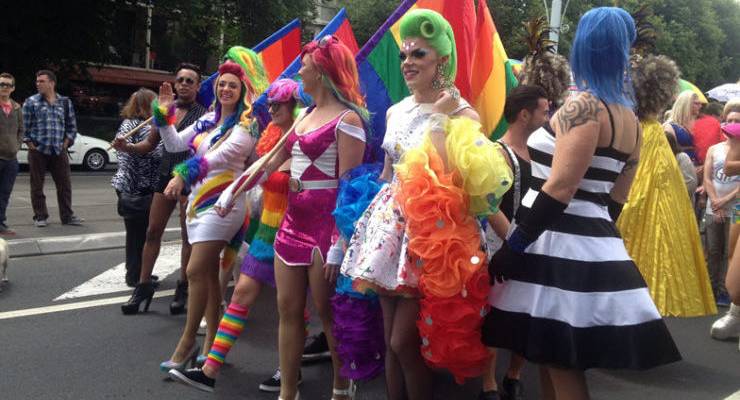
The chair of the Victorian Pride Centre, an initiative announced by the Victorian government, has addressed concerns that tenants in the centre may be limited in their lobbying and advocacy efforts.
Jude Munro, appointed chair of the Pride Centre, which is set to be a cultural hub and a “home” for many LGBTI people in the state of Victoria, says the centre will not receive ongoing funding from the government, so tenants will be able to speak out on issues as they see fit.
“We haven’t signed an agreement with the state government as yet but we’ve said all along that we won’t be an advocacy organisation,” Munro said, “however that will not in any way inhibit anyone who uses the building because it is going to be owned by the Victorian Pride Centre … there will be no state government involvement in the pride centre after its $15 million allocation.”
The centre was announced by the Andrews government in April last year, with the government to stump up $15 million in initial funds. Some of the major tenants of the VPC will be; the Victorian AIDS Council, Switchboard, JOY FM, Melbourne Queer Film Festival, Minus 18, Australian Lesbian and Gay Archives, and Midsumma Festival.
There will be 60 smaller Victorian organisations who are being consulted with on their VPC requirements and will be able to utilise the space for hot-desking, musical and arts practices, training, counselling and storage as well as tenancy. There are also hopes that there will be a cafe, car park and function space on site as a way of cross-subsidising the VPC, which will need to be financially self-sustaining.
The centre will be located on the site of the old Monroe’s restaurant on Fitzroy St, St. Kilda. The 11,000 sqm Monroe’s site and adjacent council car park were purchased by the VPC for approximately $14 million, with an estimated build completion date of December 2020.
The City of Port Philip was one of three councils (including the City of Yarra and the City of Melbourne) who vied for what is projected to be a nationally significant hub, that will offer community space, health services and a historical LGBTI archive. St Kilda Mayor Bernadene Voss has said the VPC is expect to deliver $46 million of socio-economic benefits to the Victorian LGBTI community within its first 20 years of operation.
Munro assured Crikey that the Pride Centre would not take any future funds from a government that placed any limiting conditions on the running of the VPC, although she admitted that additional support from the state government may be taken into consideration.
The only organisation that might have the authority to place conditions on the VPC would be the Victorian AIDS council, which will be a major tenant of the building and is donating $10 million to the construction and running of the VPC.
Munro said that she did not yet know what those conditions might be, as negotiations with the AIDS Council are still underway.
For Munro, who came out as a lesbian when she was 19 years old in 1971, the VPC is “recognition” of the LGBTI community and a deeply significant first in a life that has been full of firsts; she co-founded Melbourne’s gay liberation movement in 1972 and was one of the first participants in Sydney’s Mardi Gras.
The government hopes that the VPC will be similar to San Francisco’s LGBT Center which was built in March 2002 and offers comprehensive health and community support services as well as collaborative arts spaces to the LGBTI community of San Francisco.
There is no doubt that the SF LGBT Center has served as a significant source of inspiration for the Pride Centre, which will follow a similar mode of operation and intends to act as a national hub and tourist attraction for both domestic and international visitors to Melbourne.
“Each year”, Munro asserted, “we are going to be able to march past this site knowing that it’s ours in perpetuity — it’s quite extraordinary”.







Crikey is committed to hosting lively discussions. Help us keep the conversation useful, interesting and welcoming. We aim to publish comments quickly in the interest of promoting robust conversation, but we’re a small team and we deploy filters to protect against legal risk. Occasionally your comment may be held up while we review, but we’re working as fast as we can to keep the conversation rolling.
The Crikey comment section is members-only content. Please subscribe to leave a comment.
The Crikey comment section is members-only content. Please login to leave a comment.